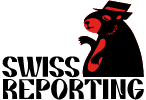Now Reading: Global Inflation Outlook 2025: Expert Predictions and Swiss Impact
-
01
Global Inflation Outlook 2025: Expert Predictions and Swiss Impact
Global Inflation Outlook 2025: Expert Predictions and Swiss Impact

Global Inflation Outlook 2025: Expert Predictions and Swiss Impact
Background
After several years of pandemic-related disruptions and geopolitical tensions affecting supply chains, inflation surged worldwide during 2022 and 2023. Central banks responded with aggressive interest rate hikes, leading to higher borrowing costs and changing purchasing power in many countries. Factors such as energy prices, supply chain recovery, and wage trends have shaped the current inflation environment.
What is happening now
As 2024 draws to a close, most major economies are reporting a gradual reduction in inflation rates. The International Monetary Fund (IMF) and Organisation for Economic Co-operation and Development (OECD) anticipate global inflation to ease further in 2025, stabilizing close to historical norms for developed nations. Key drivers for this softening include cooling energy costs and improved global trade flows. However, experts caution that regional instability and commodity price shocks remain risks.
Impact on Switzerland
Switzerland has largely managed to keep inflation lower than most European neighbors, thanks to a strong franc and stable domestic fundamentals. The Swiss National Bank (SNB) projects inflation to stay below 2% in 2025, supporting steady economic growth. Lower inflation is expected to bolster Swiss purchasing power and potentially enable cautious interest rate adjustments. Nevertheless, high prices for imported goods and energy remain a concern for Swiss households and businesses.
What happens next
Economists predict that central banks may gradually lower interest rates if inflation stays subdued, encouraging both investment and consumer spending. For Switzerland, continued vigilance is required to manage external shocks and currency fluctuations. The pace of wage growth, energy transition policies, and global economic stability will be closely watched as 2025 progresses. Consumers and businesses are advised to stay informed and prepared for any unexpected changes in the economic landscape.






















